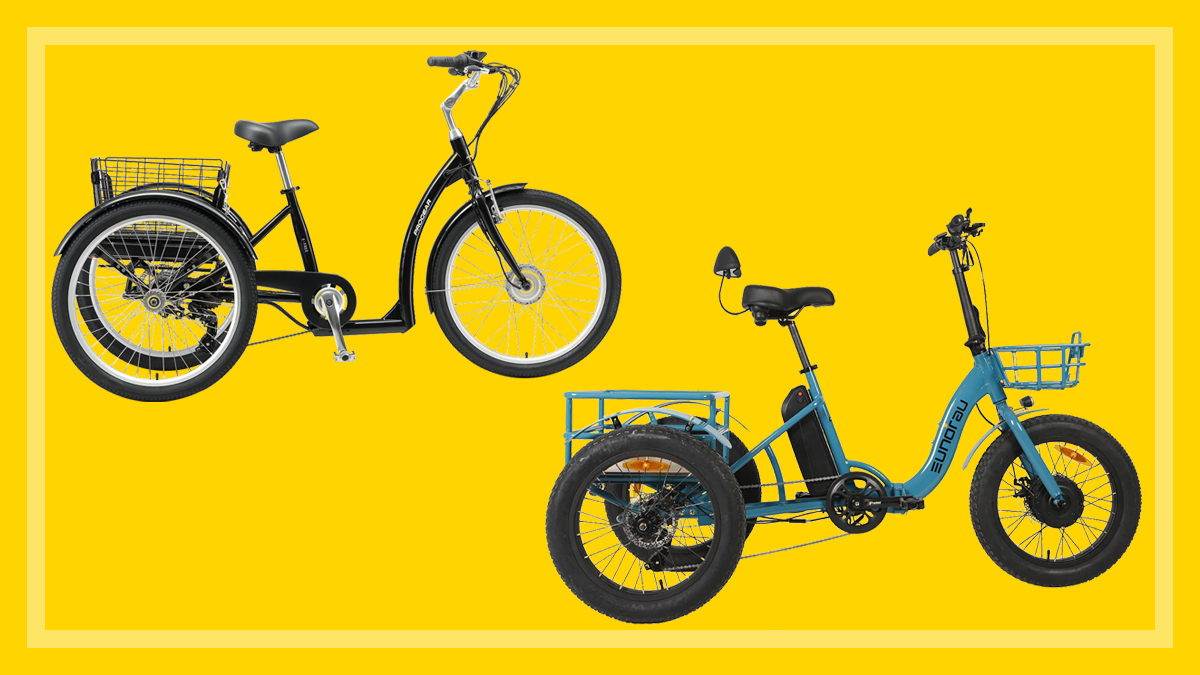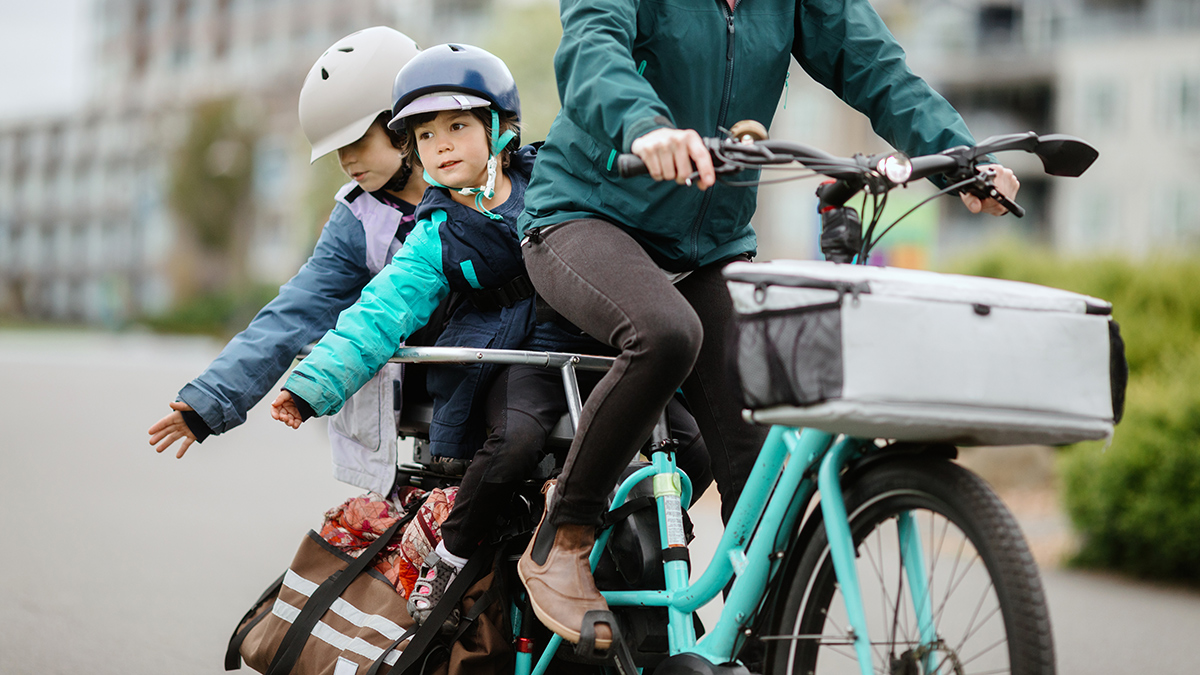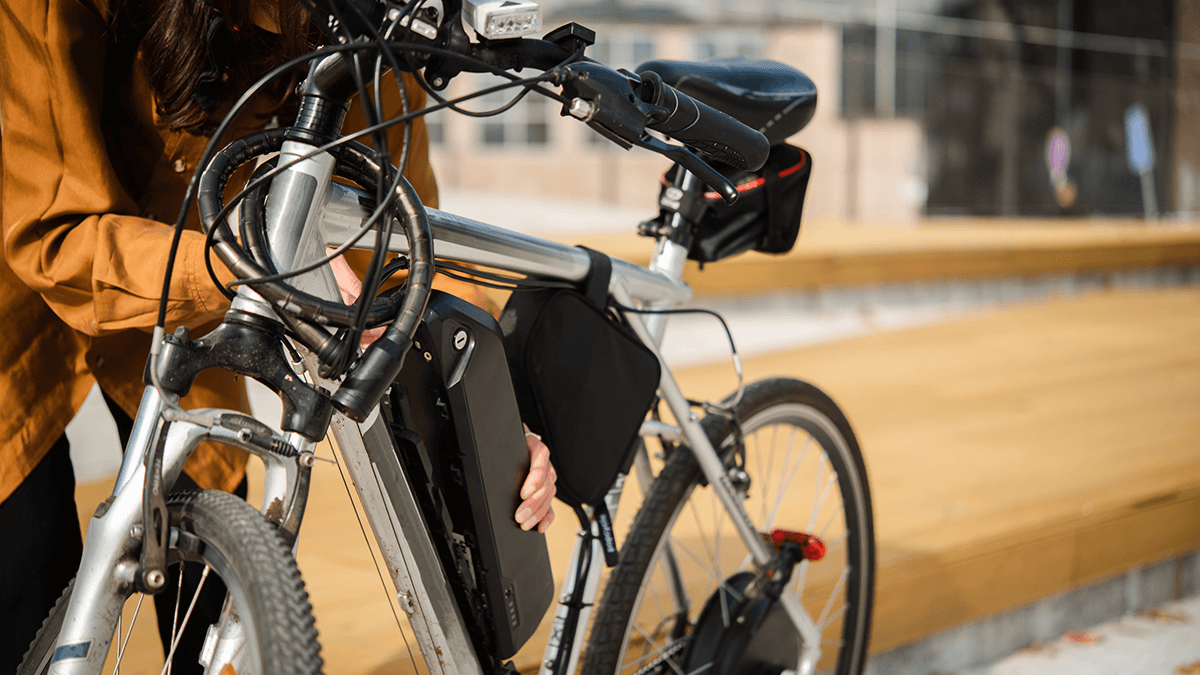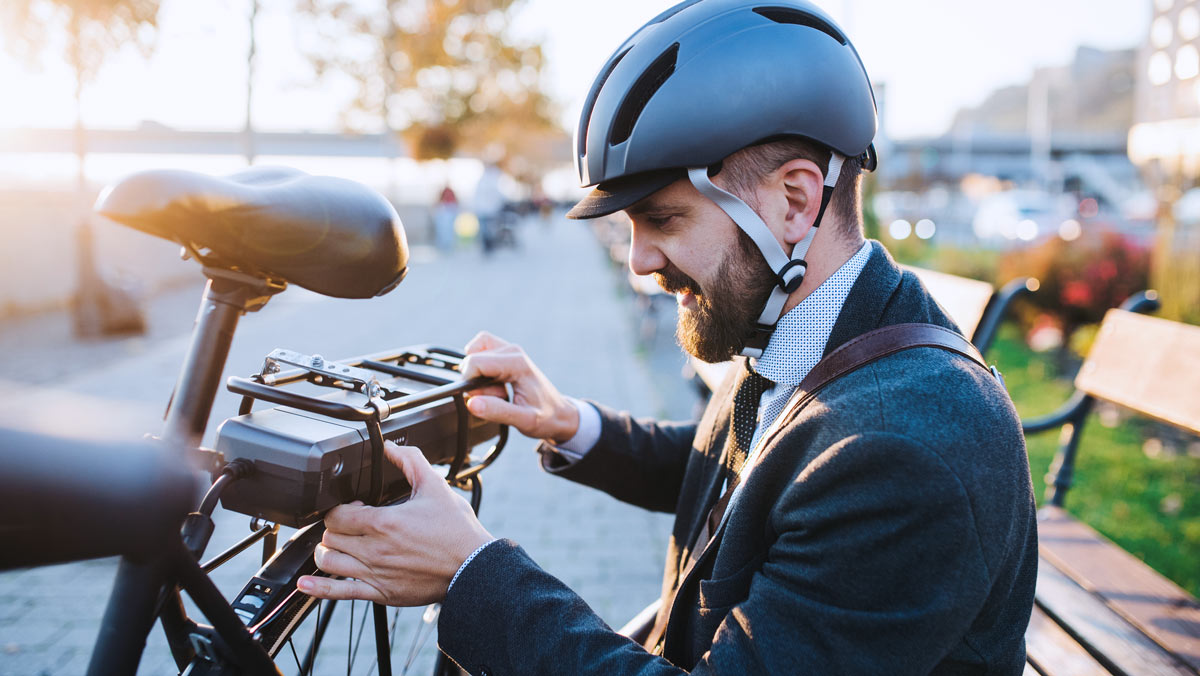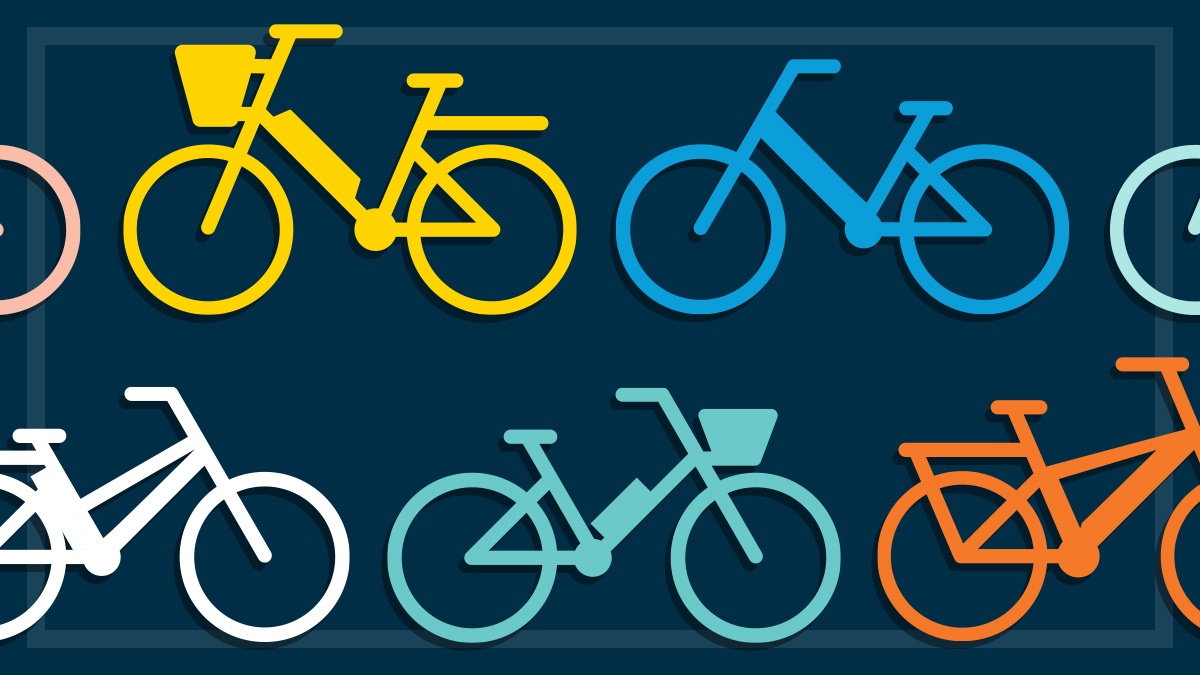Get our independent lab tests, expert reviews and honest advice.
How to buy the best kids’ bike
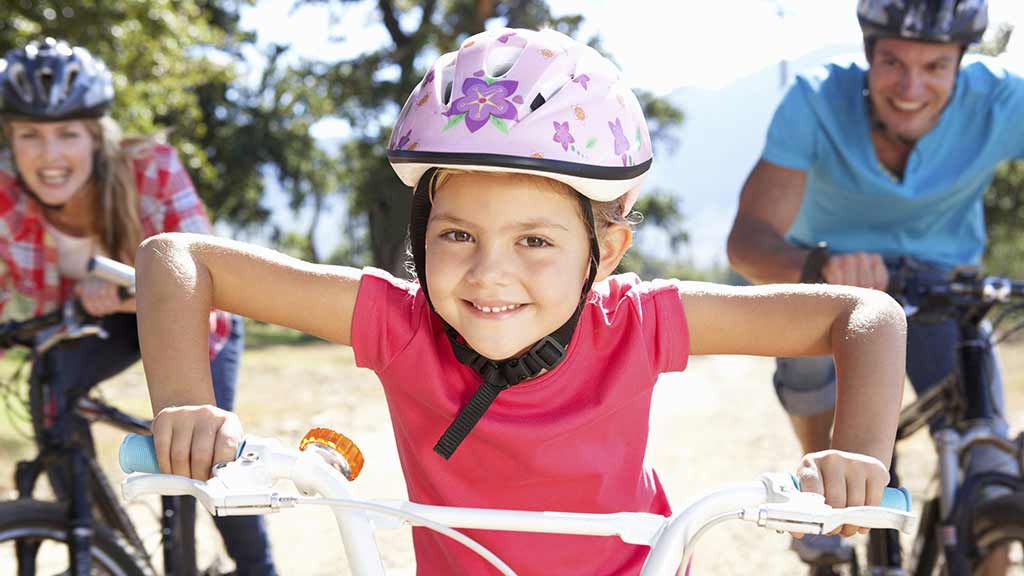
Getting a new set of wheels is a big deal for most kids, so you want to get this purchase right. Choose the right bike and you’ll be buying them a ticket to independence, fitness and hours of fun. Pick a dud and you may end up with more than just buyer’s remorse.
On this page:
Choosing the right size
Safety is always the number one priority – and that means buying a bike that’s the right size and fit. It’s tempting to buy a bigger bike they can ‘grow into’. That option might be OK for clothes, but putting a kid on the wrong size bike can be a recipe for an out-of-control disaster.
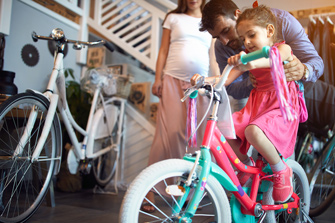
Bike sizes are based on wheel diameter. The digits that matter are usually found on the bike wheels themselves, and will be in cm or inches depending on where the bike was made.
Bicycle size guide
Every kid is different, but here’s a general size guide across ages:
- 2-4 years 30cm/12in
- 4-6 years 40cm/16in
- 6-8 years 50cm/20in
- 8-11 years 60cm/24in
But when fitting a bike, the child’s height and leg length is more important than their age. A child’s first bike is the right size when your child can:
- sit on the saddle and rest the balls of both feet on the ground. For bikes with training wheels, it might be enough if they can just touch the ground with their toes, but they will feel more confident if they can get their feet flat on the ground.
- straddle the top bar with about 3-5cm clearance and with both feet flat on the ground.
- reach the handlebars with a slight bend in the arms when sitting on the seat.
If the bike has handbrakes, your child should be able to grasp them and apply enough pressure to stop the bike.
(As your child becomes a confident rider, it’s less important that they can put their feet flat on the ground when sitting in the saddle, because they’ll be using their brakes and their balance to control the bike. Just tiptoe ground contact should be enough at that stage.)
Tip: If you’re not sure what size to get, go to a specialty bike shop with your child and have the staff help choose the right size bike. These shops will usually allow a test ride, which isn’t possible when buying online and might not be an option in a department store either. If you’re unable to try the bike before buying (such as when buying online) make sure there’s a good return policy so you can return the bike if the fit’s not right.
Key features to look for in a kid’s bike
A checklist for considering the right options in brakes, pedals, handlebars and more.
Brakes
The Australian standard says that children’s bikes must have at least two braking systems. One of these must be a back-pedal brake (where the brakes activate when you pedal backwards).
Back pedal brakes are the safest option for kids, especially very young children who don’t have the hand and arm strength to operate handbrakes safely. There’s usually a handbrake for the front wheel too – make sure it’s not a flimsy plastic lever that bends when squeezed.
Wheels
Shiny chrome-plated steel rims look slick, but their aluminium cousins are the safer option. Our sister organisation in the US tested both types and found braking distance with steel rims was five times longer than with aluminium ones. If you’re not sure how to tell the difference, take a magnet with you – it won’t stick to aluminium.
A quick-release front wheel is convenient on an adult bike for faster roadside tyre repairs, but they’re not necessary on a kid’s bike and can be dangerous if not installed correctly.
Chain guard
Kid’s bikes should have a guard that covers the chain wheel and the upper run of the chain. You should only be able to remove it with a tool. If the bike you want doesn’t have one, make sure it’s put on – or buy a different model.
Gears
Gearing depends a lot on how good a cyclist your child is, and where they’ll be riding. For beginners, a bike without gears is a better buy. Kids with more experience might find gears useful on uphill rides.
The main thing is to listen to your child – don’t give them a bike too complicated for their skill level.
Pedals and handlebars
There should be a tread on both sides of the pedal, and if it’s rough enough to make them wear shoes – even better. The ends of the handlebars should be covered so raw metal doesn’t stick out, and the handgrips should be secure.
Safety gear
Safety accessories required by the Australian standard are:
- a bell or horn, so your child can alert pedestrians and other cyclists, and
- front, rear, pedal and spoke-mounted reflectors.
Young children shouldn’t be riding at night except in controlled spaces such as a well-lit back yard. Older children riding at night – on the footpath accompanied by an adult rider, for example – will need bike lights.
Use your head
Don’t even consider giving your child a bike to ride without a helmet. An Australian Standards-approved helmet is a must. A helmet can’t be a surprise present – your child needs to try it on for size and style before you buy it.
A good helmet:
- fits snugly but comfortably on your child’s head,
- sits firmly about 1–1.5cm above the eyebrows,
- shouldn’t be able to move forwards, backwards or sideways,
- feels comfortable to wear – not too hot or heavy,
- is a bright colour to make it more visible, and
- is easy to do up and undo, and has straps that are easy to adjust.
How much does a kids’ bike cost?
A decent quality new bike with 12-inch or 16-inch wheels plus training wheels is likely to cost around $150 to $250.
A 20-inch or 24-inch new bike for an older child will cost more; you could be looking at $300+.
Does high cost equal high quality?
No, but buying a better bike can mean getting a safer one. While all new bikes should meet the Australian standard for bike safety, it’s still good to know what to look for – especially if you’re going down the second-hand route.
Can you trust a used model?
If cash flow is an issue, second-hand bikes are generally as good as the new version. In theory, you should be able to get a quality used bike for the same price or less than a cheap, not-so-good new bike.
While most kids probably prefer a shiny new ride, even if it’s low quality, you can sweeten the deal by letting them decorate a pre-used bike with paint and stickers.
Learning to ride: balance bikes and training wheels
One of the first hurdles for any child learning to ride is getting their sense of balance.
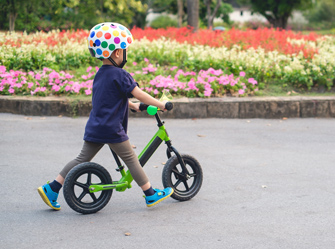
Balance bikes are small bikes for kids up to about the age of five who are starting to learn to ride. They have all the usual bike features; handlebars, tyres, seat and so on, but no pedals or chain. Like the name suggests, the idea is to help your child get the balance and steering part sorted before they graduate to the pedalling bit.
Training wheels are another option: these attach to a regular bike and let the child learn to pedal while gaining their sense of balance.
Balance bikes are easy for children to move around, and have a low centre of gravity. The child needs to be able to walk, and should be tall enough to straddle the bike before they can use one, so around 18 months is a good age to get started.
Scoot and glide
The child simply runs their feet along the ground to speed up, and then raises their feet to coast along. Some come with a rear-wheel hand brake, but if that’s too complex, dragging feet along the ground as a brake works just as well.
The concept is good, but balance bikes have a limited life span. Simply removing the pedals from a regular bike and attaching them again when your child is ready will do the same thing. It’s a legitimate way to save money if your budget doesn’t stretch to two bikes over a short time frame. (Though be warned that you might find the pedals very hard to unscrew, and you might need a pedal wrench or Allen key.)
Balance bikes vs training wheels
Companies that make balance bikes say they help kids learn to ride quicker and generally move onto a bike with pedals and no training wheels with ease. They say kids can become dependent on training wheels, and can pick up bad habits that may take time to unlearn.
Training wheels also have some safety issues. The child sits higher up and the base width of the training wheel is quite narrow. When turning, the child’s weight is shifted from the rear to the outside training wheel, which can also reduce braking power.
If you go with training wheels, start with the training wheels making contact with the ground, and gradually raise them as your child gains confidence.
Putting it all together
You don’t need a mechanical engineering degree to assemble a bike, but if tinkering with nuts and bolts isn’t your strong point, head to a professional.
The Australian standard recommends you have the bike assembled by a qualified bicycle mechanic. Bikes that come fully assembled should meet the standard for assembly – look for a checklist or certificate that confirms this.
When we last tested adult bikes, several weren’t properly assembled, so check that things like handlebars, brake pads and pedals aren’t loose. You should also check that the wheels spin true. To check, turn the bike upside down, resting it on its handlebars and seat. Spin the wheels and look at them from the front, making sure they don’t have a back-and-forth wobble – this would indicate that the spokes are buckling or the wheels aren’t attached tightly.
Read the instructions
All bikes should come with use and maintenance instructions. The Australian standard for bikes requires certain instructions, labels and warnings be included with the bike, when applicable. If you’re buying second-hand, some of them will be missing, but it’s good to know what’s expected.
- If the bike is only partially assembled, it should have simple, clear instructions for putting the pieces together, as well as which tools should be used.
- Assembled bikes with misaligned handlebars, or pedals removed (for fitting in a box, say), should have a label warning that adjustment is required.
- The bike should always have the name and address of its manufacturer, importer or distributor, and an identification number.
Specialty bikes
Bikes styled to look like off-road or stunt bikes (like ‘BMX’ or ‘mountain’ bikes) should carry a warning label if they aren’t actually suited to that purpose. If your kid is keen on this type, make sure it’s the real (and safe) deal.
Biking with babies
If your child isn’t old enough to ride a bike, you can still take them with you when you ride.The main options for carrying your precious cargo are:
Trailers
A trailer is probably the safest way to carry a young child, but it can still be risky. For one, it’s a pretty rough ride, and your baby’s brain will get quite a rattling. Experts say you shouldn’t take a baby under 12 months old in a trailer. You’ll also find it hard to buy a helmet that fits an under-one. And no helmet equals no biking.
Depending on the model, bike trailers can also tip over pretty easily. If you’re choosing this option get one with:
- rollbar protection,
- a five-point harness, and
- a hitch that will allow the trailer to stay upright even if the bike tips over.
Also consider:
- ventilation (it gets pretty hot in there)
- protection from the elements (rain and wind)
- protection from bottom bumps
- ease of attaching
- ease of storage and transportation.
Child seats
A child seat can be mounted on the front or back of your bike. Your child needs to be strong enough to wear a helmet and still keep their head upright – so we’re generally talking kids over 12 months. The seat should also have guards so their hands and feet can’t get caught in the spokes.
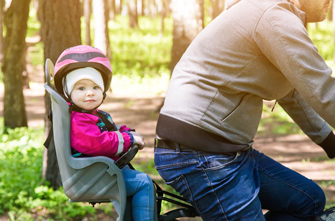
As with trailers, it’s a pretty bumpy ride for the baby. The main problem with a child seat is the destabilising effect it has on the bike: one wriggle and the bike falls sideways – or worse, tips over.
Many accidents happen when a child is sitting in the seat while the bike is leaning against a wall, or on its stand before you get on. So putting your bub in a child bike seat is really a two-person job.
Half-bike trailers
A half-bike trailer has a seat, handlebars, pedals and a rear wheel and attaches to your bike like a trailer. It’s the ideal option if your child is old enough to keep their balance and do a little pedalling, but not strong enough to cycle a long way on their own. You may also score a little help on those uphill slogs!
Cargo bike
These bikes have a large cargo box or rack built-in, and often have the option of fitting kid’s seats inside the box or on the rack. They’re popular in Europe, especially in bike-friendly countries such as the Netherlands, and are increasingly found on Australian streets too. They can be quite expensive, often costing well over $2000. They can be fairly heavy and bulky, but electric versions are available.

